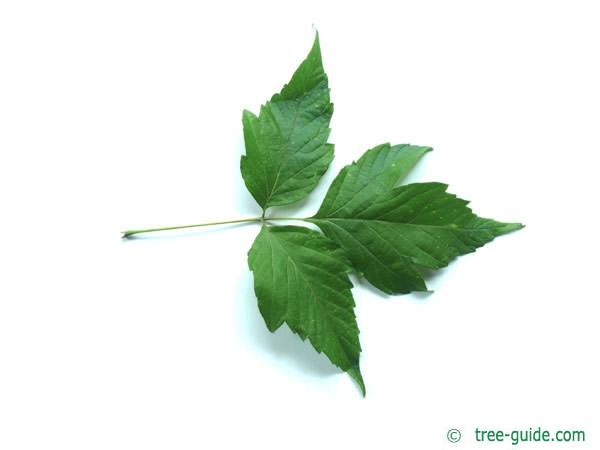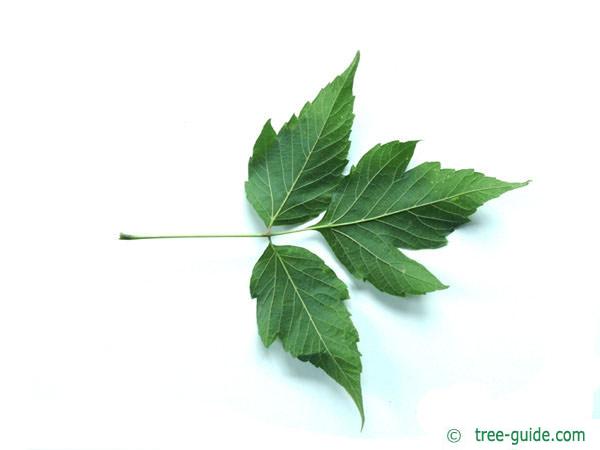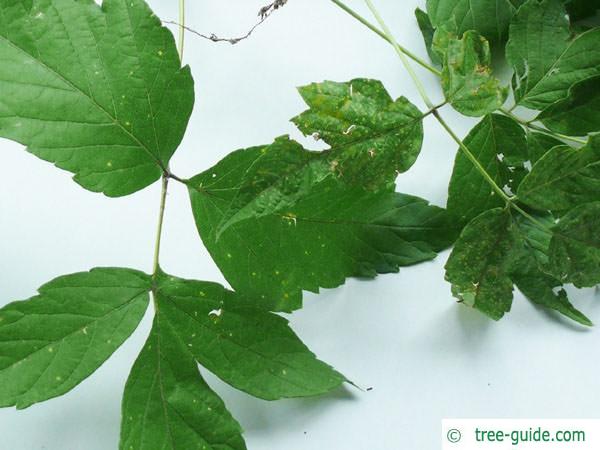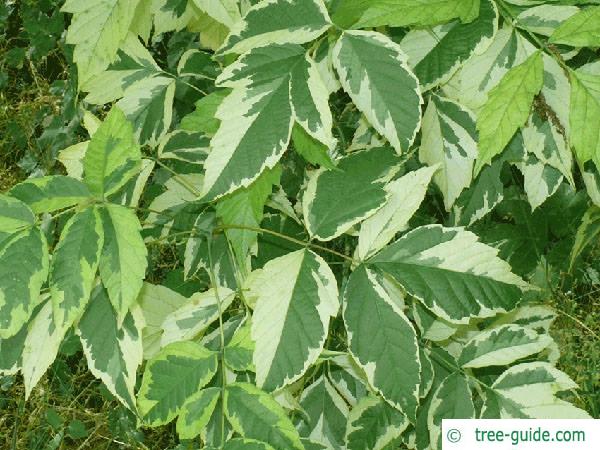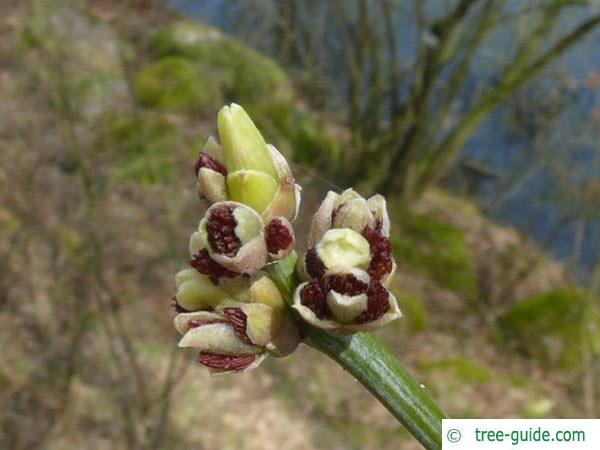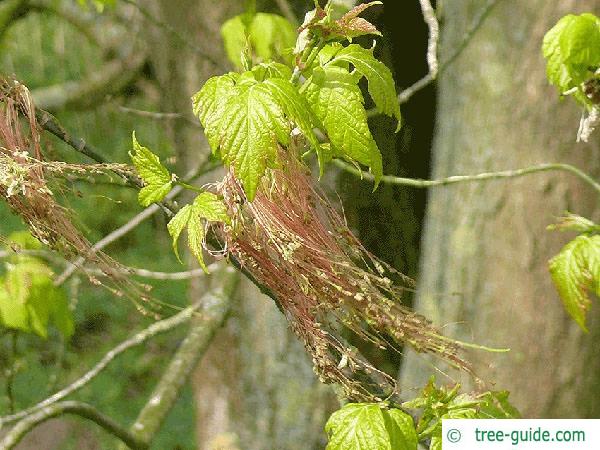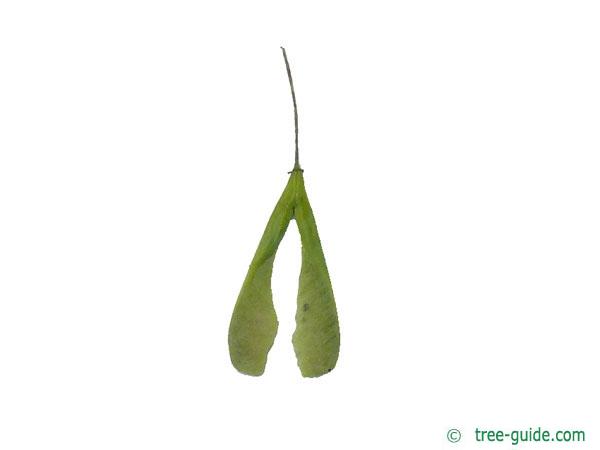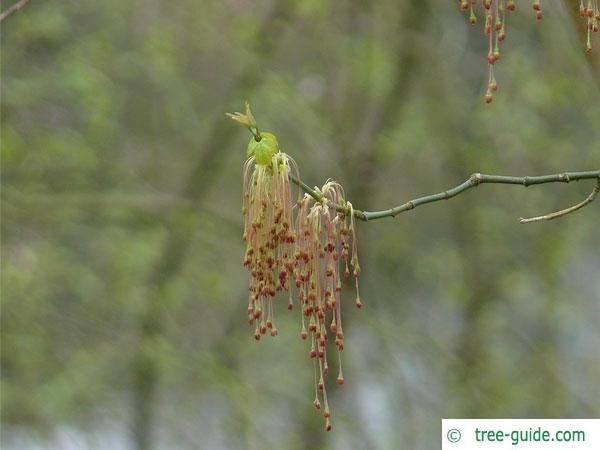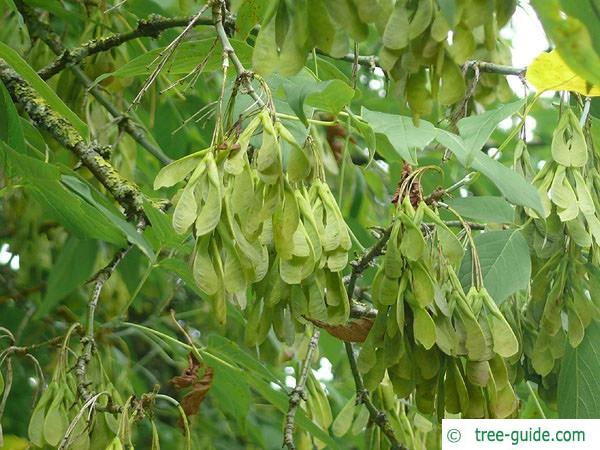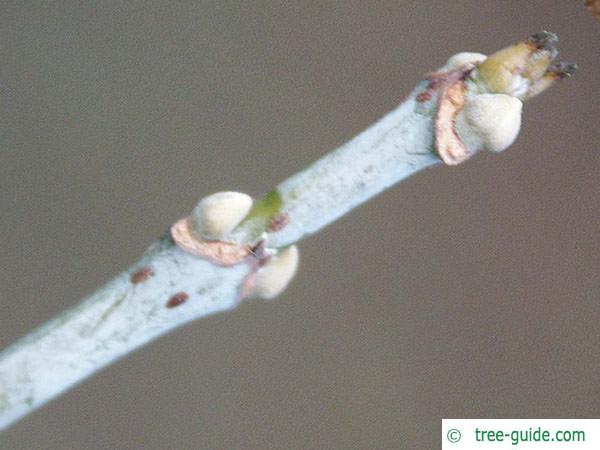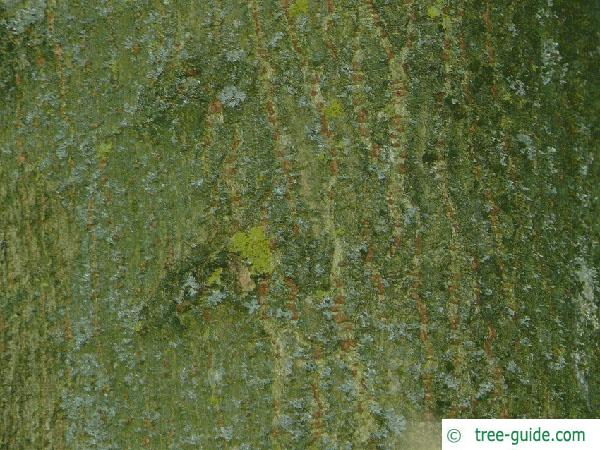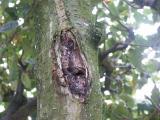Basisdaten
The Boxelder is a small tree. Often multi-stemmed varieties, and also with mottled leaves.
Description Boxelder
The Boxelder is native to North America, where it is a typical representative in alluvial forests and as shore companion green. In Europe he is meanwhile also native.
Growth
The tree often grows as a multi-stem, wide-spreading bush. The Boxelder grows fast but is not very high with a maximum of 20 m.
Leaves
The leaves are pinnate, most with three leaflets that are often lobed. The leaves are about 20 cm long and up to 15 cm wide. The leaf is green ash in the Boxelder (bot. Acer negundo), yellow in the variety Acer negundo 'Aureo variegatum', in the variety Acer negundo 'Flamingo' light pink to light white and in the variety Acer negundo 'Variegatum 'knows white or speckled one says also white-colored. The autumn color of the Boxelder is yellow.
Buds
The buds are lighter than the bark, are tight and roundish. Under the bud approach are small leaf scars. The buds are opposite.
Bark
The bark is gray-brown, smooth with slight furrows. In young trees, the bark is smooth and gray.
Blossom
The flower appears in March - April before budding and is yellowish. The long-hanging grapes are striking pictures of the Boxelder blossoms
Fruit
The Boxelder makes many fruits that fall from the trees in September. The winglets are always paired, meaning two seeds form a unit. The wings are arranged almost vertically.
Root
As the Boxelder likes to grow in alluvial forests, it has far-reaching and deeply rooted roots.
Location
The maple prefers sunny areas with sufficient water supply. Otherwise, he is an undemanding garden grove.
Usage
Human
The wood is used occasionally for decorative work, but otherwise has no greater importance.
Animals
The seeds are popular food for birds and squirrels.
Tree profile
The leaves of Boxelder are odd-pinnate with three to five leaflets. The leaves are up to 20 cm (7.9 in) long. The leaf color is green to white-colored. The leaf margin is serrated.
The male flower (cyme) is red, the female flower (hanging grapes) is yellowish. The flower appears before the leaf shoots.
The fruit is a samara with two winged nutlets. The fruits are numerous and form an acute angle.
The bark of the branches is smooth, green and can be pruinose.
gardens, single tree, pioneer plant
Mapels additional information
overview leaves | overview blossoms
overview fruit | overview trunk
overview winter | overview trees







